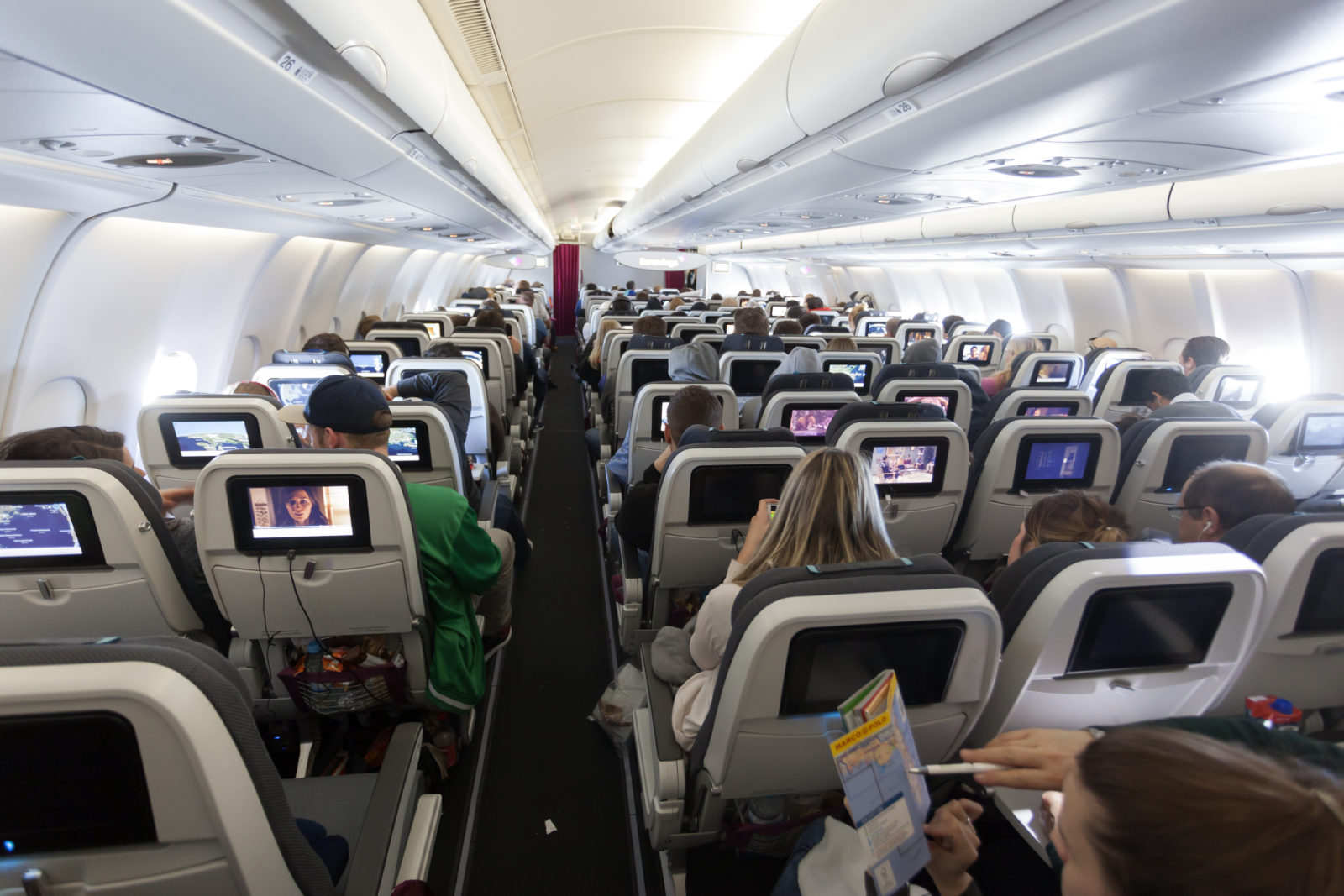
An interesting question recently arose on the popular frequent flyer forum Flyer Talk in which someone asked if it was acceptable to walk up and down the aisle in order to stretch their legs and ‘get some steps in’.
The passenger asked the question because they were flying in British Airways Club World, and when they went to walk to the back of the plane, they discovered that there was a rope separating Business Class.
Of course, the rope is there to stop Economy Class passengers from entering a premium question, but might it be okay for someone to take the rope down to go for a walk?
I say this is an interesting question because my first instinct as a flight attendant who is very aware of the danger of unexpected turbulence is that passengers should remain seated and strapped in as much as possible, so going for strolls around the cabin isn’t advisable.
But when I looked into this a little more, this isn’t actually the official answer that many airlines advise their passengers… in fact, quite the opposite.
Knowing that Qantas has, for many years, gone to great lengths to educate passengers about the risk of deep vein thrombosis – a clot that can develop in the lower leg, thigh, or pelvis when sitting down for long periods of time.
Qantas has lots of exercise suggestions that passengers can perform in their seats to reduce the risk of DVT, but interestingly, Qantas also encourages its passengers to get out of their seats and ‘occasionally’ go for a walk down the aisles.
The caveat to that advice is, of course, that passengers should only go for a stroll, and I quote, “when the seatbelt sign is off and it’s safe to do so.” Qantas also notes that “each exercise should be done with minimal disturbance to other passengers”.
But back to British Airways, which was the airline that the person who first posed the question on Flyer Talk was flying.
British Airways has remarkably similar advice, suggesting that passengers “take a walk around the cabin regularly” to reduce the risk of DVT.
Other suggestions include simply standing in your seat and stretching your legs and arms, and avoiding crossing your arms and legs when sat down.
This is particularly important for passengers in a particularly wide set of ‘at risk’ groups, which includes anyone aged over 40, pregnant passengers, people who have cancer or blood clotting issues, and those who have previously suffered from DVT.
In addition, Qantas says smokers and obese passengers should make an effort to walk around the cabin, as well as anyone who is dehydrated, has suffered heart failure or has varicose veins.
Aside from limiting strolls to when the seatbelt signs are switched off, there are also some other simple etiquette hints that I would suggest. Ideally, limit walks to times outside of food and beverage service when you might block the aisles and try not to stare at other passengers.
During night flights, also take lots of care when walking the aisles… legs and arms are no doubt sticking out in the aisle, and there could be trash on the floor, which might be a slip hazard.
Also, most flight attendants don’t have an issue with you coming into the galley, although try not to drag these visits out for too long. If there are too many people standing in the galley or by the doors, you’ll be instructed to return to your seat because there aren’t enough oxygen masks available in the event of a decompression.
One thing to note… neither Qantas nor British Airways suggests ‘galley yoga’ as an acceptable form of inflight exercise.
Mateusz Maszczynski honed his skills as an international flight attendant at the most prominent airline in the Middle East and has been flying throughout the COVID-19 pandemic for a well-known European airline. Matt is passionate about the aviation industry and has become an expert in passenger experience and human-centric stories. Always keeping an ear close to the ground, Matt's industry insights, analysis and news coverage is frequently relied upon by some of the biggest names in journalism.










This is not an interesting discussion at all to me know what would be? A detailed analysis of various airlines on popular routes and how many FAs they schedule along with a breakdown of emergency exit doors, seats by cabin class, and total seats.
I suspect cutting costs on soft product is deeper among some carriers than most passengers are aware (eg UA staffs 9 cabin crew on their 787 sin-sfo vs 13 on SQ with roughly similar total seats by cabin class and same number emergency exit it doors and statutory requirements).
I have a DVT history and I’m over 40, so I always get an aisle seat so I can get up & move around without bothering seat mate. I do walk aorund the cabin, just a walk up & down the aisle. Have done dozens of trans-Pacific flights on UA, AA, NZ, JL, QF and Singapore and never had a problem walking the cabin or doing stand & stretch.
Being tall, I like to do some laps on a 2 aisle plane during long flights During boarding I always tell the nearest flight attendant of my plans. One time was n Lufthansa, Munich to San Francisco (A-340) , and the attendant told me she thought that was very smart to do to avoid circulatory issues. It also gave a number of opportunities to look at the staircase going down to the toilet area.
The answer is if you are in business it is generally ok to do so. I have done so on about 60% of my business class flights. Walked to the back of the Lufthansa 747-8 and stayed there for a few minutes. I also went to the upper deck for 20 seconds. The FA was there but just asked if I needed anything. The last time in November on a Delta A330-300, the FA asked me something when I was walking back from economy at the boundary to premium economy on my way to business. I just said I’m in business. It’s better to walk on a night flight when flight attendants are sparse. This was a day time flight.
I’m at a higher clotting risk due to autoimmune disorders, so I was specifically told by both cardiology and rheumatology to both wear compression stockings and walk around the plane during flights. I don’t bother trying to go all the way up through business and first classes, I figured such areas were closed to main cabin/economy fliers as a matter of course and didn’t want a bunch of hassle for my curiosity. The FAs were okay with me going between forward and aft galleys in main cabin, and I didn’t have another clot, and that’s all that matters IMO.
If passengers are allowed to leave their seats, they might interrupt flight attendants playing on their phones or gossiping about coworkers.
Is it not possible to install a small cycle machine , nothing fancy and allow passengers a 1 minute slot to get some quick exercise.
I can’t imagine anyone sitting on an airplane for more than 2 hours. At least 75% of an airplane does just that. How can they be so ignorant?
On long flights, I always “take a walk” every couple of hours when I’m awake. It has long been suggested by the medical profession and echoed by the airlines. I’ve never had anyone restrict me journeys, except when crossing into business or first class sections from economy. Even that was usually due to the FA’s assuming I was going to use the lavatory in those sections rather than economy. Being careful going through economy at night is critical as some folks stretch out well into the aisle.